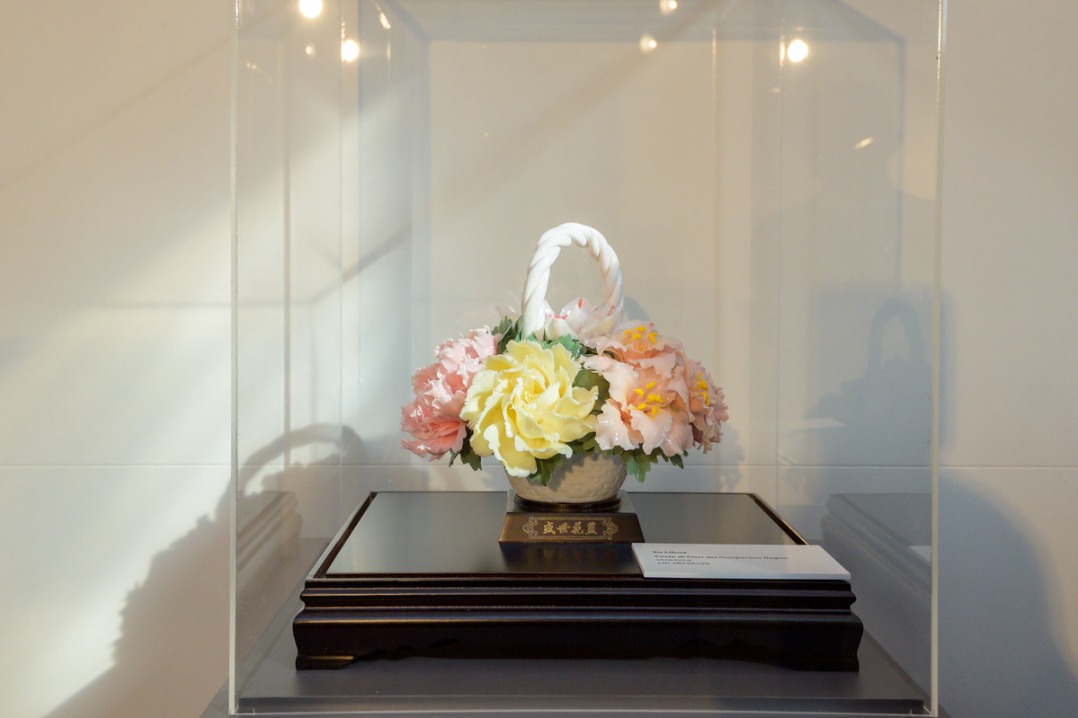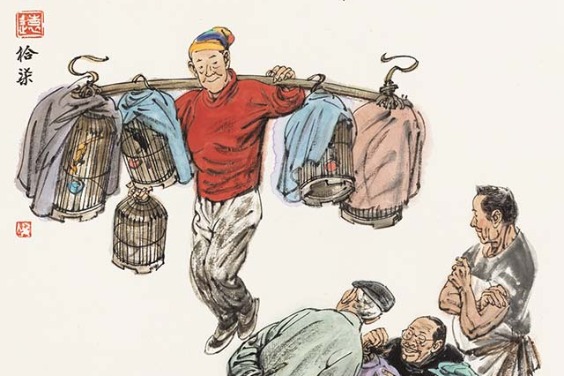New art exhibition: humanity in the age of AI

With computer-generated landscapes of Chinese temples and otherworldly jungles, and through ethereal electronic music and philosophical dialogues, artist Lawrence Lek depicts a future where machines have acquired humanlike intelligence — and humans have grown machinelike in their aesthetic consumption.
Reflecting on a common fear provoked by the threat of human obsolescence, the London-based artist's film Aidol explores the relationship between artificial intelligence (AI) and human creativity.
Lek's film and works of an international group of artists — including sculptures, videos and installations — are on display at the de Young Museum in San Francisco through Oct 25.
The exhibition, Uncanny Valley: Being Human in the Age of AI, invites the audience to join the debate of what it means to be human — or remain human — as technological innovation continues to shape people's identities and societies.
It is the first major US exhibition to explore the relationship between humans and intelligent machines through an artistic lens, according to the museum.
For most of the 20th century, the human-machine relationship has been represented through the figure of a humanoid robot, a persistent trope that is associated with "uncanny valley", a term coined in 1970 by a Japanese engineer, said Claudia Schmuckli, the curator of the exhibition.
The term describes the discomfort humans experience when confronted with artificial representations that mimic their physical and mental properties.
"One of the questions that this exhibition is asking is whether it's time to define a new visual vocabulary to describe this relationship between humans and machines," said Schmuckli, who is curator of contemporary art and programming at the Fine Arts Museums of San Francisco.
The new "visual vocabulary" is not necessarily tied to a figure that physically resembles humans. It looks at how AI is operative in people's daily lives in ways that are largely invisible, such as in e-commerce transactions, search engines and engagements on social media, she said.
An example is the ever-changing "painting" by Polish artist Agnieszka Kurant, who called it "the portrait of social energy".
The work, titled Conversions, consists of a copper plate covered with liquid crystal paint and computer-controlled heat pumps attached to the plate.
The painting continuously changes color patterns in response to algorithmic sentiment analysis of social media feeds, as the computer coverts the "collective social energy", in the form of tweets, posts and online searches, into physical heat energy.
In the installation called A.A.I. (Artificial Artificial Intelligence), Kurant critiques the growing use of online laborers who are paid subminimum wages. Through brightly colorful sand-termite mounds embellished with gold, glitter and crystals, she raises the question of how the rise of AI continues to shape the global economy.
American artist and engineer Ian Cheng reflects on the interdependency of carbon and silicon forms of intelligence with an app called BOB (Bag of Beliefs), where users can interact with the digitally simulated AI creature, BOB.
BOB is capable of evolution, but its growth, behavior and personality are molded by online interaction with visitors who assume collective responsibility for its wellbeing.
Other artists' works examine how value systems are built into AI, posing the philosophical question of what it means to be human when machines can synthesize human understanding.
"The show looks at both the philosophical and political stakes of the increasing integration of AI into every aspect of our daily lives," said Schmuckli.
"It's asking whether or not this new reality ... forces us to potentially rethink our understanding of intelligence and our understanding of the human ... in view of a future, in which artificial intelligence will play an even more important role than it does today," she said.





































